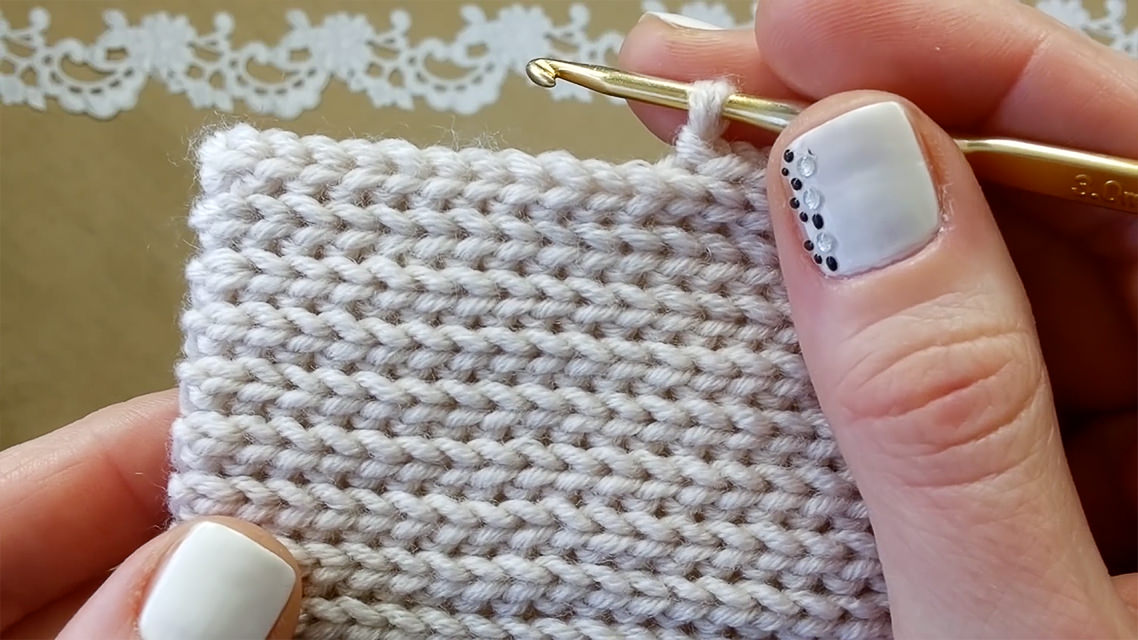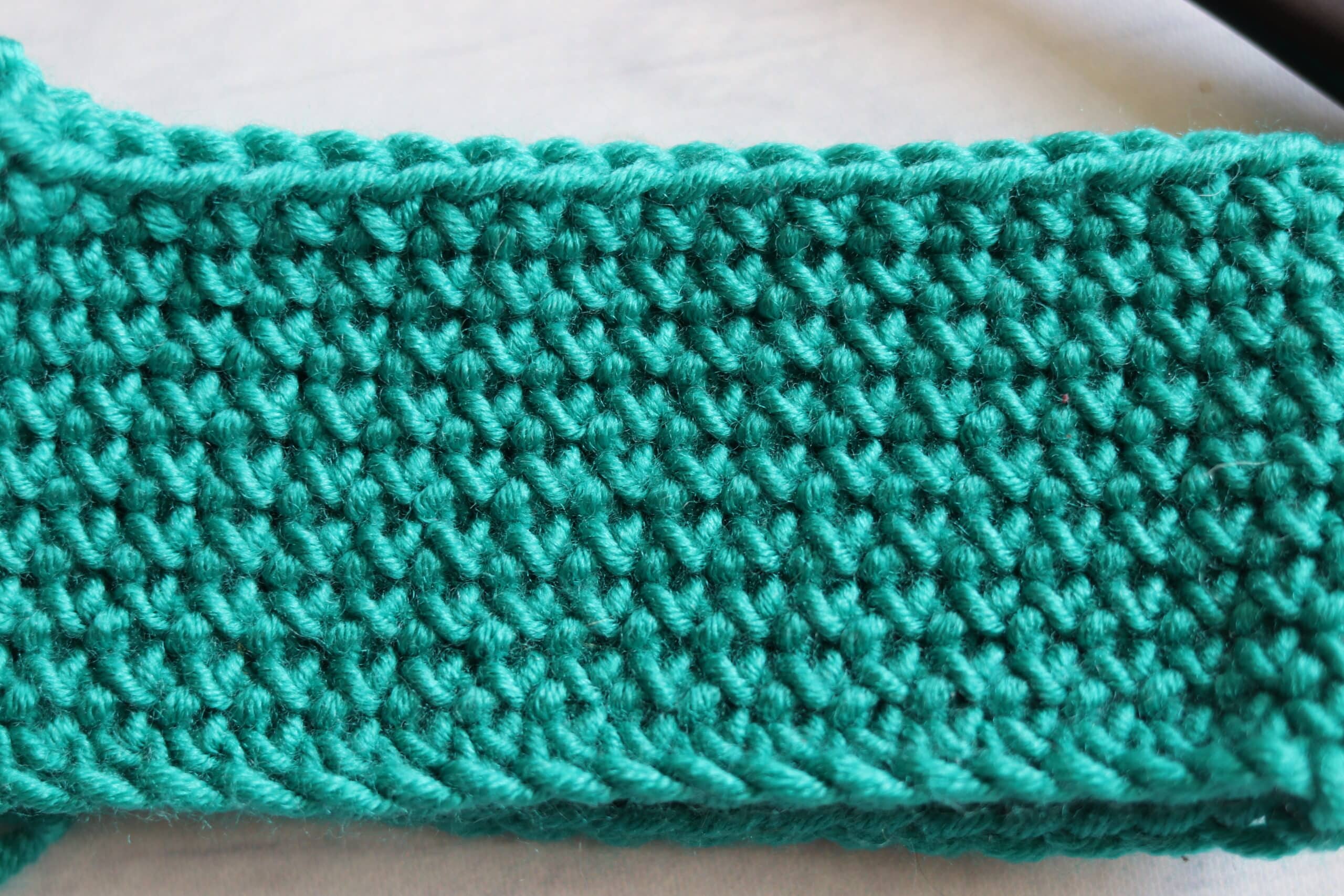Introduction
How To Make Tight Crochet Stitches: Crocheting is a beloved craft that allows you to create beautiful and functional items using just a hook and some yarn. One of the key skills every crocheter strives to master is the art of making tight crochet stitches. Whether you’re a beginner eager to embark on your crocheting journey or an experienced crafter looking to refine your technique, achieving tight stitches is essential for creating projects with precision and durability.
Tight crochet stitches not only result in neater and more professional-looking creations but also ensure that your finished pieces maintain their shape and warmth. They are especially crucial when making items like blankets, scarves, hats, or amigurumi toys. Fortunately, learning how to make tight crochet stitches is not as challenging as it may seem.
We will take you through the step-by-step process of achieving tight crochet stitches. From choosing the right yarn and hook size to mastering tension and stitch control, we’ll provide you with valuable tips, tricks, and techniques to elevate your crochet game. So, whether you’re a novice or an enthusiast seeking to enhance your skills, let’s embark on this journey together and unlock the secrets to creating impeccable crochet projects.

Which crochet stitch is the tightest?
If you want to keep it simple, start with a single crochet (sc) (UK double crochet). This creates a tightly woven fabric which is almost completely opaque. This, and the ease with which it can be increased and decreased, is one of the most popular reason it’s used for amigurumi.
The tightest crochet stitch is typically the single crochet (sc) stitch. The single crochet stitch is known for its compact and dense texture, making it ideal for projects that require a firm and sturdy fabric. It is often used in amigurumi, dishcloths, and projects where you want to create a tight, closely woven fabric.
To create a single crochet stitch, you insert your hook into the desired stitch, yarn over, pull up a loop, yarn over again, and then pull through both loops on the hook. This process results in a stitch that has minimal space between the loops, creating a tight and solid fabric.
Other crochet stitches, such as half double crochet, double crochet, and treble crochet, have more yarn overs and loops in their construction, which inherently create a looser and more open texture compared to the single crochet. Therefore, if you’re aiming for a tight and dense fabric in your crochet project, the single crochet stitch is the way to go.
Keep in mind that the tightness of your crochet stitch can also be influenced by your tension, hook size, and yarn weight. Adjusting these variables can help you achieve your desired level of tightness in your crochet work.
Why does my crochet look loose?
One common cause of loose crochet stitches is holding the yarn incorrectly. When crocheting, it’s essential to maintain consistent tension in the yarn while working with it. If you’re holding the yarn too loosely, your stitches may become too large and uneven.
If your crochet work appears loose, several factors could be contributing to this issue. Identifying the root cause is essential for achieving the desired tension and stitch density in your projects:
Tension: One of the most common reasons for loose crochet is inconsistent tension. Tension refers to how tightly or loosely you hold the yarn as you work. If your tension is too loose, it can result in loose and sloppy-looking stitches. Try to maintain a consistent and firm tension throughout your project.
Hook Size: The size of your crochet hook can significantly affect the tightness of your stitches. Using a larger hook than what is recommended for your yarn can lead to looser stitches. Refer to the yarn label for the recommended hook size and adjust accordingly.
Yarn Weight: Using a yarn that is thinner than what the pattern calls for can also lead to loose stitches. Make sure your yarn matches the recommended weight in the pattern.
Experience Level: Beginners often struggle with loose stitches because they are still developing their tension control. Practice can improve your tension and help you create more uniform stitches.
Technique: Ensure that you are following the correct crochet technique for the stitch you’re working on. Proper yarn over, hook placement, and stitch execution are essential for consistent tension.
Blocking: Sometimes, your crochet piece may look loose initially but tighten up after blocking. Blocking can help even out your stitches and improve the overall appearance of your project.
By paying attention to these factors and practicing your crochet skills, you can gradually improve your tension control and create neater, tighter stitches in your crochet projects.
What is the most hardest stitch?
A backstitch is one of the strongest hand sewing stitches. The backstitch gets its name because the needle goes into the fabric behind the previous stitch.
Determining the “hardest” crochet stitch is subjective and largely depends on individual skill levels and preferences. However, some crochet stitches are considered more challenging due to their complexity or the techniques required to execute them. One of the stitches often considered one of the most challenging is the “bullion stitch.”
The bullion stitch involves wrapping the yarn around the hook multiple times to create a long, dense, and decorative stitch. Achieving uniformity in the wraps and pulling the hook through the loops can be quite tricky, making this stitch challenging, even for experienced crocheters.
Another stitch that can be challenging is the “Jacobs Ladder” or “Catherine’s Wheel” stitch. This stitch requires creating intricate circular motifs with a series of double crochets worked together, which can be challenging to maintain consistency in tension and stitch placement.
Filet crochet is also known for its complexity. It involves creating an openwork pattern with filled and empty squares, which can be challenging to master, especially when working on intricate designs.
The difficulty of a crochet stitch depends on your skill level and experience. What may be challenging for one crocheter might be easy for another. To tackle challenging stitches, it’s essential to start with patience, practice, and perhaps find tutorials or guidance from experienced crocheters. Over time, these “hard” stitches can become more manageable as your skills and confidence grow.
What happens if you crochet too tightly?
When you crochet with too-tight tension, your stitches are so small that it’s hard to work back into them, and that’s what happened in this case: it was an effort to force my hook into each stitch. My yarn-holding hand began to cramp from pulling the yarn so tightly, and I didn’t enjoy the process of crocheting at all.
Crocheting too tightly, also known as having excessive tension in your stitches, can lead to several issues and challenges in your crochet projects:
Difficulty in Working: Crocheting too tightly can make it challenging to insert your hook into the stitches, especially when working with thicker yarn or smaller hook sizes. This can slow down your progress and make the process less enjoyable.
Stiff Fabric: Tight crochet stitches result in a stiff and inflexible fabric. While this may be suitable for some projects like amigurumi or pot holders, it can be undesirable for items like scarves, blankets, or garments, which benefit from a softer, drapier texture.
Yarn Strain: Excessive tension can cause strain on both your yarn and your hands. It can lead to yarn breakage and discomfort or even pain in your fingers and wrists, potentially causing hand fatigue or injury over time.
Misshapen Projects: Tight crocheting can distort the shape of your projects, as the stitches do not have enough room to expand naturally. This can result in items that don’t match the intended size or shape in your pattern.
Inconsistent Gauge: Achieving the correct gauge (stitch and row count per inch) is essential for accurately following patterns. Tight crocheting can result in a smaller gauge than required, leading to projects that are too small.
Practice maintaining a more relaxed tension while crocheting, which allows for smoother, more comfortable stitching and creates a fabric with better drape. You can also experiment with different hook sizes and yarns to find a combination that helps you achieve the desired tension for your specific project. Developing good tension control is essential for successful and enjoyable crochet work.

What materials are essential for achieving tight crochet stitches, and how do they contribute to the final result?
Achieving tight crochet stitches requires careful consideration of materials to ensure a polished and durable finished result. The essential materials include yarn, crochet hooks, and occasionally additional tools like stitch markers and measuring tape.
Yarn: The choice of yarn plays a significant role in achieving tight crochet stitches. Opt for a yarn that has little to no stretch, as overly elastic yarn can result in looser stitches. Natural fibers such as cotton or a blend with acrylic tend to work well for tight stitches. These materials provide structure and stability to your crocheted fabric.
Crochet Hook: The size of your crochet hook is crucial. Smaller hook sizes are generally better for tight stitches. However, you must match the hook size to the yarn weight for balanced tension. A hook that’s too large for your chosen yarn will lead to loose stitches, while one that’s too small can be challenging to work with.
Tension: Maintaining consistent tension in your yarn as you crochet is vital for tight stitches. Tension refers to how tightly you hold the yarn while working. Practice controlling your yarn tension to create uniform stitches throughout your project.
Stitch Markers: These can help you keep track of stitch counts and maintain even spacing between stitches, contributing to the overall tightness of your work.
The materials essential for achieving tight crochet stitches interact to create a firm, polished fabric. Careful selection of the right yarn and hook size, coupled with consistent tension and the use of helpful tools like stitch markers, all contribute to the final result by ensuring that your stitches are neat, uniform, and tightly constructed, resulting in projects that are not only aesthetically pleasing but also durable and functional.
Can you explain the importance of maintaining consistent tension while crocheting tightly?
Maintaining consistent tension while crocheting tightly is a fundamental skill that greatly influences the outcome of your crochet projects. Tension refers to how tightly you hold the yarn as you work, and it impacts the size, appearance, and drape of your stitches. Here’s why it’s essential:
Even Stitch Size: Consistent tension ensures that all your stitches are the same size. When you crochet tightly, variations in tension can lead to uneven stitches, resulting in a project that looks lumpy or distorted. This uniformity is crucial for achieving a polished, professional appearance in your work.
Proper Fit: Tight crochet stitches are often used for projects like garments and amigurumi, where fit and form are critical. Inconsistent tension can lead to variations in sizing, making it challenging to assemble pieces or achieve the desired fit.
Yarn Economy: Crocheting tightly with consistent tension allows you to use the right amount of yarn for your project. Inconsistent tension can lead to excessive yarn usage, potentially causing you to run out before completing your project.
Ease of Crocheting: Maintaining a consistent tension level makes the crocheting process smoother and more enjoyable. It reduces the strain on your hands and minimizes the effort required to pull the yarn through each stitch.
Professional Finish: Projects with consistent tension appear neater and more polished. They are less likely to unravel or lose shape over time, resulting in a finished product that stands the test of time.
Maintaining consistent tension while crocheting tightly is vital for producing projects that are visually appealing, well-fitting, economically crafted, and built to last. Practice and patience are key to developing this skill, ensuring that your crochet creations are a testament to your craftsmanship.
Could you describe different crochet stitch techniques that help in achieving tightness in your projects?
Achieving tightness in your crochet projects involves mastering various stitch techniques that contribute to the overall structure and appearance of your work. Here are some key crochet stitch techniques that help you create tight stitches:
Single Crochet (SC): This is one of the tightest and most basic crochet stitches. It involves inserting the hook into the designated stitch, yarn over, pull up a loop, and then yarn over again and pull through both loops on the hook. The single crochet creates a dense and firm fabric.
Half Double Crochet (HDC): HDC is slightly taller than the single crochet but still results in a relatively tight stitch. It provides more flexibility than the single crochet while maintaining a degree of tightness.
Tight Yarn Over (YO): When yarn over is used in combination with other stitches, keeping it tight (close to the hook) helps control the looseness of the stitch and maintains tension.
Front and Back Loop Crochet: By working into either the front or back loop of a stitch, you can create tighter, textured fabrics. This technique is often used in ribbing or to add visual interest to projects.
Amigurumi Techniques: When crafting amigurumi (crocheted stuffed toys), tight stitches are crucial to achieve the desired shape and prevent stuffing from showing through. Continuous rounds and regular decreases contribute to tightness.
Blocking: While not a stitch technique per se, blocking your finished project can help enhance tightness by setting the stitches in place. Blocking involves wetting or steaming your work and then pinning it into the desired shape and size.
Incorporating these crochet stitch techniques into your projects allows you to create tight and well-structured fabric, making your creations not only visually appealing but also durable and long-lasting. Experimenting with different stitches and tension levels will help you master the art of achieving tightness in your crochet work.
Are there specific types of yarn or hook sizes that work best for ensuring tight stitches, and why?
Yes, the choice of yarn and crochet hook size plays a crucial role in ensuring tight stitches in your crochet projects. Here’s a breakdown of how specific types of yarn and hook sizes can contribute to achieving tight stitches:
Yarn Type:
Cotton Yarn: Cotton yarns are often favored for creating tight stitches because they have minimal stretch and elasticity compared to other fibers like acrylic or wool. This lack of stretch helps maintain the shape and structure of your stitches.
Blended Yarns: Yarns that combine natural fibers like cotton with synthetic fibers like acrylic can strike a balance between tightness and softness. They offer some stretch while still providing good stitch definition.
Hook Size:
Smaller Hooks: Smaller crochet hooks, typically in the lower size range (e.g., 2.25mm to 4.0mm), are ideal for achieving tight stitches. They create smaller loops, which, when paired with appropriate yarn, result in firmer and more compact stitches.
Matched Hook-to-Yarn: Ensure your hook size matches the recommended size for the yarn you’re using. If your hook is too large for the yarn weight, your stitches may turn out too loose.
The choice of yarn and hook size should align with your project goals. For projects where tightness is essential, such as amigurumi, using a cotton yarn with a small hook is typically a great choice. However, for items where some stretch is desired, like wearables, you may opt for a blended yarn with a slightly larger hook size.
The key is to experiment with different combinations of yarn and hook sizes to find what works best for your specific project and your personal crocheting style. This allows you to achieve the desired level of tightness while ensuring that your crochet stitches are both functional and visually appealing.

Conclusion
Mastering the art of making tight crochet stitches is an essential skill for any crochet enthusiast. The precision and durability it adds to your projects make it a technique worth investing time and effort into perfecting. Throughout this guide, we’ve explored the various aspects of achieving tight stitches, from selecting the right materials to maintaining proper tension and control.
Remember that practice makes perfect in the world of crochet, and don’t be discouraged if you don’t achieve tight stitches right away. With dedication and patience, you’ll gradually improve your skills and develop a keen sense of how to create stitches that are both secure and visually pleasing.
As you continue your crocheting journey, keep in mind that creativity knows no bounds. The tight crochet stitches you’ve learned here can be applied to an endless array of projects, allowing you to bring your unique ideas to life with confidence. So, grab your hook, select your favorite yarn, and let your imagination soar as you create beautiful, tight stitches in your crochet creations.


